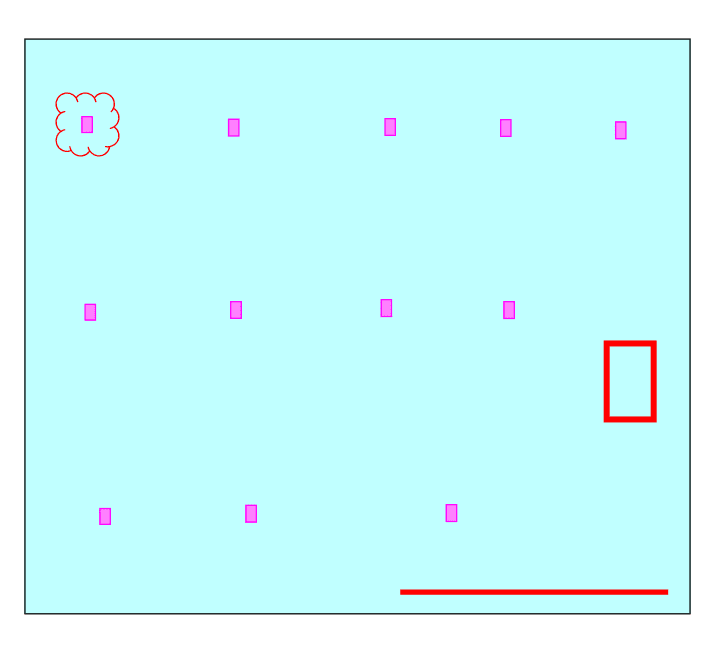I am looking for opinions from fellows here in regards to seismic design especially torsional effect.
Say I have a floor plan as below. Two stories (all flat slab) only and in low seismic zone (but I still want to enhance the its seismic performance as much as I can)

1. What will you do to enhance the structure in general if torsion cannot be avoided?
2. If the above layout cannot be changed. What can I do to achieve a better performance to earthquake? Which elements that I need to look carefully into can enhance its capacity? (My opinion is the columns in upper left corner considering the floor will rotate about the core, causing more displacement (especially for non-linear) in upper left corner and thus require these columns to have better capacity to the drift. Am I wrong?)
3. If I don't perform non-linear analysis. How do I check if torsion is acceptable with a given structure? (My understanding is, with torsion, the structure will drift more especially when it becomes non-linear. Do I increase the the drift that I got from linear analysis and times a certain factor and then check all the columns' F-displacement capacity to this factored drift with given reinforcement?)
4. Is there any books that you would recommend especially those ones that cover detailed explanations or examples for torsional effect?
Appreciated if you don't mind share your opinions.
Say I have a floor plan as below. Two stories (all flat slab) only and in low seismic zone (but I still want to enhance the its seismic performance as much as I can)

1. What will you do to enhance the structure in general if torsion cannot be avoided?
2. If the above layout cannot be changed. What can I do to achieve a better performance to earthquake? Which elements that I need to look carefully into can enhance its capacity? (My opinion is the columns in upper left corner considering the floor will rotate about the core, causing more displacement (especially for non-linear) in upper left corner and thus require these columns to have better capacity to the drift. Am I wrong?)
3. If I don't perform non-linear analysis. How do I check if torsion is acceptable with a given structure? (My understanding is, with torsion, the structure will drift more especially when it becomes non-linear. Do I increase the the drift that I got from linear analysis and times a certain factor and then check all the columns' F-displacement capacity to this factored drift with given reinforcement?)
4. Is there any books that you would recommend especially those ones that cover detailed explanations or examples for torsional effect?
Appreciated if you don't mind share your opinions.
